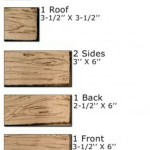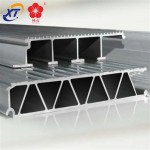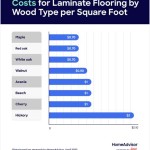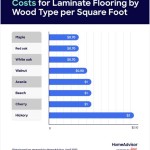Waterproof Flooring: A Practical Choice for Bathrooms
The bathroom, a space frequently exposed to moisture, demands flooring materials that can withstand humidity, spills, and potential leaks. Selecting the appropriate flooring is crucial not only for aesthetic appeal but also for the longevity and structural integrity of the bathroom. Waterproof flooring options offer a practical solution, mitigating the risks associated with water damage and providing a durable and visually appealing surface. This article explores the various types of waterproof flooring suitable for bathrooms, their benefits, and factors to consider during selection.
Understanding Waterproof vs. Water-Resistant Flooring
It is essential to differentiate between waterproof and water-resistant flooring. Water-resistant flooring can repel water for a certain period, preventing immediate absorption. However, prolonged exposure to moisture can still lead to damage, such as warping, staining, or mold growth. Waterproof flooring, on the other hand, is impervious to water. It prevents water from penetrating the surface and reaching the subfloor, providing comprehensive protection against water damage. This distinction is particularly important in bathrooms, where exposure to water is constant and unavoidable.
Types of Waterproof Flooring Suitable for Bathrooms
Several types of flooring materials offer waterproof properties, making them suitable for bathroom applications. Each type possesses unique characteristics in terms of aesthetics, durability, cost, and installation requirements. Understanding these differences is critical for making an informed decision that aligns with individual needs and preferences.
Luxury Vinyl Flooring (LVF): Luxury vinyl flooring, including luxury vinyl planks (LVP) and luxury vinyl tiles (LVT), is a popular choice for bathrooms due to its affordability, durability, and wide range of designs. LVF is constructed with multiple layers, including a waterproof core, a design layer that mimics the appearance of wood, stone, or tile, and a protective wear layer. The waterproof core prevents water from seeping through the flooring, protecting the subfloor from moisture damage. LVF is also resistant to scratches, stains, and dents, making it a practical choice for high-traffic bathrooms. Installation can be a relatively straightforward process, with options for click-lock, glue-down, or loose-lay systems. The click-lock system, in particular, is often preferred for DIY projects due to its ease of installation.
Sheet Vinyl Flooring: Sheet vinyl flooring is another cost-effective and waterproof option for bathrooms. It comes in large rolls, which minimizes seams and reduces the risk of water penetration. Sheet vinyl is typically made from a single layer of vinyl, making it durable and easy to clean. It is available in various patterns and colors, offering a wide range of design possibilities. However, installing sheet vinyl can be more challenging than installing LVF, requiring precise cutting and gluing to ensure a seamless and waterproof installation. Professional installation is often recommended to achieve the best results.
Tile Flooring: Tile flooring, particularly porcelain and ceramic tile, is a classic and highly durable option for bathrooms. Porcelain and ceramic tiles are inherently waterproof and resistant to stains, scratches, and fading. They are also available in a vast array of sizes, shapes, colors, and patterns, allowing for extensive design customization. While the tiles themselves are waterproof, the grout lines between the tiles are porous and can absorb water. To prevent water damage, it is essential to use a high-quality grout and to seal the grout lines regularly. Epoxy grout is a waterproof alternative to traditional cement-based grout, offering superior protection against water damage. Installation of tile flooring requires specialized tools and skills, making professional installation the preferred option.
Stone Polymer Composite (SPC) Flooring: SPC flooring is a type of rigid core vinyl flooring that is known for its exceptional durability and waterproof properties. It consists of a stone-plastic composite core, which is incredibly strong and resistant to dents and impacts. SPC flooring is also dimensionally stable, meaning it is less likely to expand or contract with changes in temperature and humidity. This makes it an excellent choice for bathrooms that experience significant temperature fluctuations. SPC flooring comes in a variety of styles, including planks and tiles, and can mimic the appearance of wood, stone, or tile. Installation is typically a click-lock system, making it relatively easy to install.
Factors to Consider When Choosing Waterproof Bathroom Flooring
Selecting the appropriate waterproof flooring for a bathroom involves considering several factors, including the budget, aesthetics, durability requirements, and installation complexity. Evaluating these factors will help narrow down the choices and ensure that the selected flooring meets specific needs and preferences.
Budget: The cost of waterproof flooring can vary significantly depending on the type of material, the quality of the product, and the installation costs. LVF and sheet vinyl flooring are generally more affordable than tile or SPC flooring. However, the long-term cost of ownership should also be considered. Durable and high-quality flooring may have a higher upfront cost but can last longer and require less maintenance over time.
Aesthetics: The aesthetic appeal of the flooring is an important consideration, as it contributes to the overall look and feel of the bathroom. LVF, sheet vinyl, tile, and SPC flooring are available in a wide range of colors, patterns, and styles. Consider the existing décor of the bathroom and choose flooring that complements the overall design.
Durability: The durability of the flooring is crucial, especially in high-traffic bathrooms. LVF, tile, and SPC flooring are known for their durability and resistance to scratches, stains, and dents. Sheet vinyl flooring is less durable than these options and may be more prone to damage. The protective wear layer on LVF and the density of the tile or SPC core contribute to their overall durability.
Installation: The ease of installation is another important factor to consider, particularly for DIY projects. LVF with a click-lock system is generally the easiest to install, while sheet vinyl and tile flooring require more specialized skills and tools. Professional installation is often recommended for these options to ensure a proper and waterproof installation. SPC flooring installation is similar to LVF click-lock, making it a DIY-friendly option.
Maintenance: Maintenance requirements should also be considered when choosing waterproof flooring. All of the flooring options discussed are relatively easy to clean and maintain. Regular sweeping or vacuuming, along with occasional mopping with a mild detergent, is typically sufficient to keep the flooring looking its best. It is important to follow the manufacturer's instructions for cleaning and maintenance to avoid damaging the flooring.
The Importance of Proper Subfloor Preparation
Regardless of the type of waterproof flooring chosen, proper subfloor preparation is essential for ensuring a successful and long-lasting installation. The subfloor must be clean, level, and dry. Any existing flooring or adhesives should be removed, and any cracks or imperfections in the subfloor should be repaired. Self-leveling compounds can be used to create a smooth and even surface. A moisture barrier may also be necessary to prevent moisture from seeping up from the subfloor and damaging the flooring.
Addressing Common Concerns Related to Waterproof Flooring
While waterproof flooring offers significant advantages for bathrooms, some common concerns are associated with its use. Addressing these concerns can help ensure that the chosen flooring meets specific needs and expectations.
Cost: The initial cost of waterproof flooring can be a deterrent for some homeowners. However, it is important to consider the long-term benefits of waterproof flooring, such as reduced risk of water damage, lower maintenance costs, and increased property value. Comparing the cost of different types of waterproof flooring and considering financing options can help make it more affordable.
Slip Resistance: Slip resistance is a critical safety consideration in bathrooms. Some types of waterproof flooring can be slippery when wet. To mitigate this risk, choose flooring with a textured surface or consider adding non-slip mats or rugs to high-traffic areas. Some tile options also come with an anti-slip coating.
Environmental Impact: The environmental impact of flooring materials is an increasing concern for environmentally conscious homeowners. Some types of vinyl flooring contain harmful chemicals that can off-gas into the air. Look for flooring products that are certified by reputable organizations, such as FloorScore or GreenGuard, to ensure that they meet strict environmental standards. Consider options like tile which are made from natural materials.
Installation Best Practices for Waterproof Bathroom Flooring
Proper installation is crucial for maximizing the waterproof benefits of any flooring. Ignoring best practices can lead to leaks and failures, negating the advantages of waterproof materials. Here are some key installation considerations for each type of flooring:
Luxury Vinyl Flooring (LVF): Ensure the subfloor is completely level and free of debris. For click-lock systems, follow the manufacturer's instructions carefully, paying close attention to seam alignment and locking mechanisms. Use a vapor barrier if the subfloor is concrete. Properly acclimating the planks to the room's temperature and humidity before installation is also crucial to prevent expansion and contraction issues later.
Sheet Vinyl Flooring: This requires meticulous cutting and fitting, especially around toilets, vanities, and other fixtures. Use the appropriate adhesive, spread evenly, and ensure full contact between the sheet vinyl and the subfloor. Overlap seams can be heat-welded for a truly waterproof connection if using multiple sheets.
Tile Flooring: Proper backer board installation is essential to prevent cracking. Use a high-quality thin-set mortar and ensure full coverage under each tile. Allow adequate curing time before grouting. Seal the grout lines thoroughly and regularly to prevent water penetration. Consider using epoxy grout for added water resistance.
Stone Polymer Composite (SPC) Flooring: Ensure the subfloor is clean and level. SPC flooring is relatively easy to install using a click-lock system. Pay attention to expansion gaps. A vapor barrier is often included in the product, but it's essential to confirm whether it needs an additional one based on the subfloor type.
Selecting waterproof flooring for the bathroom is a strategic decision that enhances both the functionality and aesthetics of the space. By carefully considering the various types of waterproof flooring available, evaluating the factors relevant to individual requirements, and adhering to proper installation practices, individuals can create a bathroom that is both beautiful and resistant to the damaging effects of water.

Waterproof Bathroom Flooring Options Twenty Oak

Vinyl Planks In Bathrooms Residential Inspiration Flooring

Waterproof Laminate Flooring Review Pros And Cons

Bathroom Laminate Flooring Waterproof Floors Flooringsupplies Co

Luxury Vinyl Flooring Is A Great Choice For Chic Bathrooms

The Best Modern Bathroom Flooring Carpet Call

Best Bathroom Flooring Options Forbes Home

Best Vinyl Flooring For Bathrooms

Is Vinyl Plank Flooring Waterproof Leader Floors Blog

Best Bathroom Flooring Options
Related Posts








